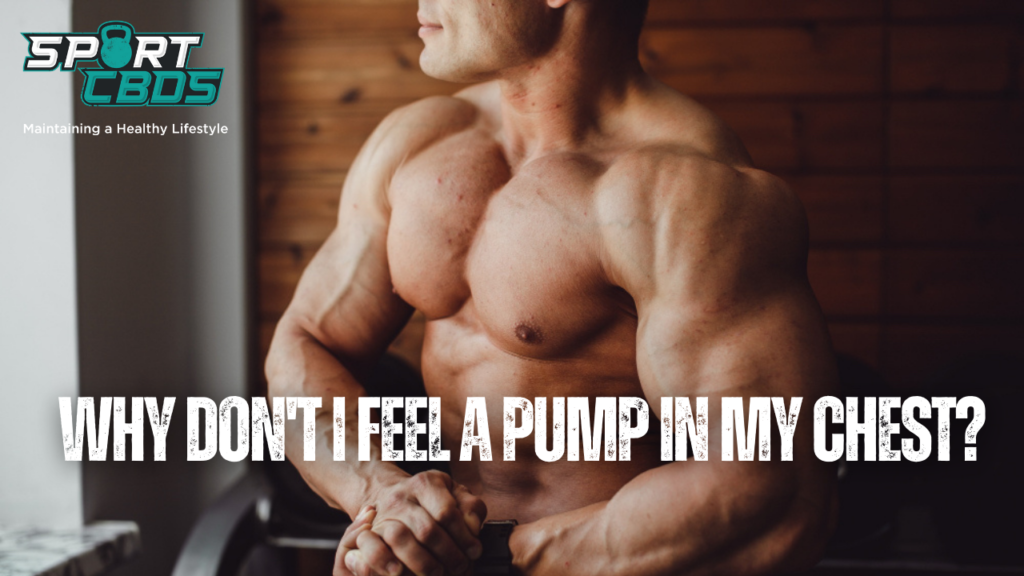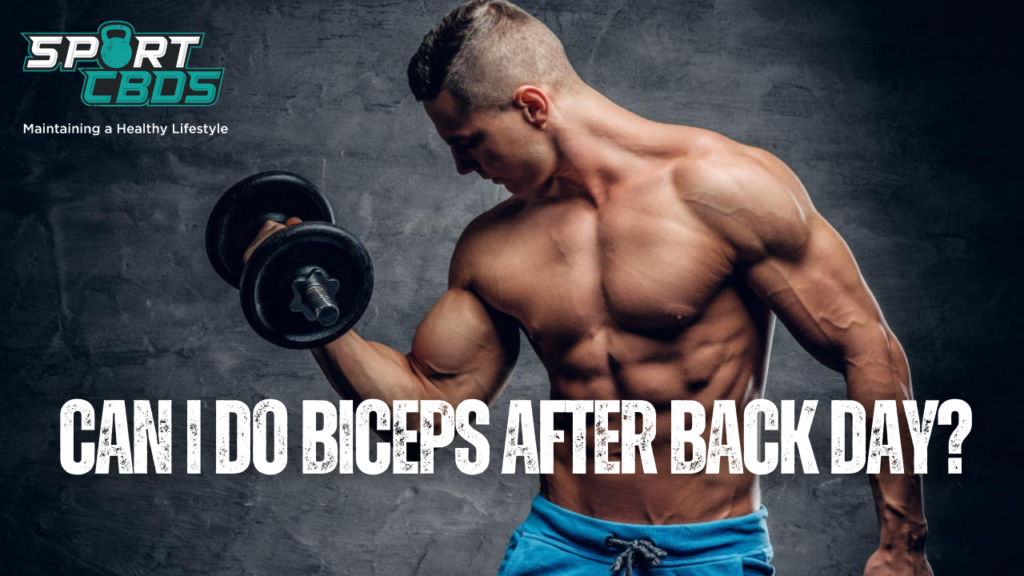
Why Don’t I Feel a Pump in My Chest? Answers Here
Imagine you’re at the gym, working hard on your chest exercises, but you’re just not feeling that satisfying pump. You wonder what you’re doing wrong and why your chest isn’t responding the way it should. You’re not alone in this quest for the elusive chest pump, which plays a crucial role in muscle development.
In this article, we’ll explore the reasons why you might not be feeling a pump, tips for maximising your chest workouts, and how to overcome tightness and discomfort. So let’s dive in.
Why Don’t I Feel a Pump in My Chest?
Not feeling a pump in your chest during a workout can be attributed to several factors, such as an inadequate mind-muscle connection, insufficient warm-up, poor exercise form or technique, lack of workout variety, or underdeveloped chest muscles. Establishing a strong mind-muscle connection is crucial for consciously engaging the chest muscles during an exercise. A proper warm-up helps increase blood flow to the muscles, while maintaining correct form and technique ensures that the chest muscles are targeted effectively. Incorporating a variety of chest exercises can challenge different areas of the chest and promote muscle development. Finally, addressing underdeveloped chest muscles through progressive overload and prioritizing chest exercises can help you experience the sought-after chest pump, which plays a vital role in muscle growth and development.
Let’s look in more detail at the points above and what you can do to improve the chances of feeling that pump…
There are several reasons for not feeling a chest pump during workouts and they are as follows:
Inadequate mind-muscle connection
The mind-muscle connection refers to your capacity to consciously activate a particular muscle group while performing an exercise. This crucial connection helps you optimize the outcomes of your workouts. If you’re having difficulty experiencing a chest pump, consider implementing strategies such as engaging in mental visualisation of the targeted muscles throughout each repetition, which can heighten muscle activation.
Additionally, concentrate on muscle contractions by slowing down your movements, allowing you to feel the muscle working more effectively. Finally, experiment with single-arm exercises that isolate one side at a time, promoting a stronger connection with the individual muscle groups.
Insufficient warm-up
Adequate warm-up is vital for preparing your muscles and avoiding injuries during exercise. By warming up, you enhance blood flow to the muscles, which consequently contributes to a more effective pump.
Before starting your chest workout, make sure to include warm-up exercises such as performing arm circles and shoulder rolls to loosen up your shoulder joints and upper body. Additionally, engage in light bench presses or push-ups to activate your chest muscles, priming them for the more intense workout to follow.
Poor exercise form or technique
Utilising incorrect form or technique during chest exercises can cause a shift in focus away from your chest muscles, leading to a reduced pump. Common errors in chest exercises include flaring your elbows excessively during bench press, bouncing the bar off your chest, or overly arching your back.
To address these problems, ensure that you position your elbows at a 45-degree angle relative to your body, carefully control the movement so the bar gently touches your chest before pressing back up, and maintain a slight arch in your lower back while keeping your feet securely on the ground.
Lack of workout variety
Incorporating a diverse range of exercises in your workout routine can effectively target different areas of the chest and help avoid plateaus. To add variety to your chest workouts, consider introducing exercises such as incline bench press and decline bench press, which emphasize the upper and lower chest regions, respectively.
Additionally, chest flys can be included to further engage the pectoral muscles and promote well-rounded chest development.
Underdeveloped chest muscles
When your chest muscles are underdeveloped, it can become more challenging to experience the desired pump during your workouts. Various factors can contribute to underdeveloped chest muscles, such as genetic predispositions, past injuries, or an unbalanced training program that doesn’t adequately focus on the chest.
To address this issue and encourage chest muscle growth, concentrate on the principle of progressive overload, which involves gradually increasing the weight, repetitions, or intensity of your chest exercises. Additionally, prioritise chest-targeting exercises within your training regimen to ensure a balanced and comprehensive approach to muscle development.
Now let’s look at some of the ways in which you can maximise that chest pump…
Prioritising compound movements
Compound movements, like the bench press, engage multiple muscle groups and joints simultaneously, making them highly effective for promoting chest development and enhancing overall strength.
By incorporating exercises such as the barbell bench press, dumbbell bench press, and push-ups into your workout routine, you can ensure comprehensive muscle engagement, leading to improved chest growth and increased functional strength.
Related: Is It Ok To Do Push Ups After Chest Day?
Emphasising time under tension
Time under tension (TUT) denotes the duration for which your muscles experience strain during a set. By increasing TUT, you can stimulate muscle growth and intensify your chest pump. To boost TUT during chest exercises, consider adopting techniques such as slowing down the eccentric (lowering) phase of the movement, which allows for greater muscle control and activation.
Additionally, incorporating a brief pause of 1-2 seconds at the bottom of the repetition can further challenge your muscles. Utilizing tempo training, such as following a 3-1-3 count (3 seconds for the eccentric phase, 1-second pause, and 3 seconds for the concentric phase), can also enhance TUT and contribute to more effective chest workouts.
Incorporating isolation exercises
Isolation exercises are designed to target a specific muscle group, allowing you to concentrate on developing your chest muscles more effectively. By integrating exercises such as cable crossovers, pec deck flys, and dumbbell pullovers into your routine, you can isolate and engage the pectoral muscles to enhance their growth and definition.
These isolation movements complement compound exercises in your chest workouts, ensuring a well-rounded and comprehensive approach to muscle development.
Utilising Drop Sets and Supersets
Incorporating drop sets and supersets into your workout can elevate intensity and help you achieve a superior chest pump. Drop sets require performing an exercise to failure, then immediately reducing the weight and continuing the exercise.
On the other hand, supersets involve executing two exercises consecutively with minimal rest in between. To integrate these techniques into your workout, you might consider performing a drop set on the last set of your bench press or supersetting chest flys with push-ups.
Focusing on Proper Breathing
Breathing significantly influences muscle activation and overall performance. Employing proper breathing techniques can assist you in attaining an optimal chest pump. To enhance your breathing during chest exercises, make sure to inhale deeply before initiating the movement, exhale during the concentric (lifting) phase of the exercise, and inhale during the eccentric (lowering) phase.
Now let’s look at ways of addressing tightness and discomfort in the chest.
Identifying Causes of Tightness
Chest tightness can arise from muscle soreness, which is typical after intense workouts. Nevertheless, it’s crucial to distinguish between muscle soreness and other potential issues, such as chest pain or shortness of breath. If you encounter any unusual symptoms, seek advice from a medical professional.
Remedies for Tightness and Discomfort
If muscle soreness or overuse is causing tightness and discomfort, consider implementing remedies such as stretching and mobility exercises (e.g., doorway stretches or chest openers), massage and self-myofascial release techniques using a foam roller or massage ball, and providing ample rest and recovery time for your muscles to heal.
In certain cases, tightness and discomfort may signal an underlying health issue. If you’re uncertain about the origin of your symptoms, it’s important to consult a medical professional for a thorough evaluation.
Related: Why Does My Chest Hurt When I Do Dips?
FAQs
Why don’t I feel pushups in my chest?
If you don’t feel pushups in your chest, you may need to adjust your form or hand placement. Make sure your hands are shoulder-width apart, and your elbows are at a 45-degree angle from your body. Focus on the mind-muscle connection and keep your core tight throughout the movement.
Why does my chest never feel sore after a workout?
Lack of soreness after a workout doesn’t necessarily mean your chest muscles aren’t being worked effectively. Soreness is an indicator of muscle damage, but it’s not the only sign of a successful workout. Focus on progressive overload, proper form, and incorporating a variety of exercises to ensure your chest muscles are challenged.
Why don’t I feel it in my chest when I bench?
If you don’t feel your chest working during bench press, it could be due to poor form, an inadequate mind-muscle connection, or muscle imbalances. To correct this, focus on engaging your chest muscles, keeping your elbows at a 45-degree angle, and maintaining proper breathing during the movement.
How do I activate my chest?
To activate your chest muscles, focus on establishing a strong mind-muscle connection, using proper form during chest exercises, and incorporating a variety of compound and isolation movements that target the chest. Warm-up exercises, like light bench press or push-ups, can also help activate your chest muscles before your main workout.
How do you know if your chest is weak?
A weak chest can be identified by a lack of muscle definition, difficulty performing chest exercises, or an imbalance between your chest and other muscle groups. If you’re struggling with chest development, focus on prioritizing chest exercises, progressive overload, and proper form during your workouts.
How do you flex your pecs?
To flex your pecs, stand or sit with good posture and engage your chest muscles by squeezing them together. This should create a contraction in your pectoral muscles. Practice this movement regularly to improve your ability to flex your pecs and enhance the mind-muscle connection.
Is it OK to not touch your chest on bench press?
While it’s generally recommended to touch your chest during bench press to ensure a full range of motion, there are some exceptions. If you have shoulder mobility issues or previous injuries, stopping just short of touching your chest may be safer. However, always prioritize proper form and consult a fitness professional if you’re unsure about your technique.
Final thoughts…
Achieving a chest pump is crucial for muscle growth and development. By addressing common concerns, such as an inadequate mind-muscle connection, insufficient warm-up, poor form, lack of workout variety, or underdeveloped chest muscles, you can enhance your chest workouts and experience that satisfying pump.
Remember to prioritize compound movements, emphasize time under tension, incorporate isolation exercises, utilize drop sets and supersets, and focus on proper breathing. And finally, be mindful of tightness and discomfort, taking necessary steps to remedy these issues or seek professional advice.
With consistent practice and attention to form, technique, and variety, you’ll be well on your way to unlocking the secrets of an effective chest pump and achieving the results you desire.
Do you not feel the pump in your chest and have these tips helped? Let me know in the comments below.
If you enjoy sport and use CBD to help with your recovery in between gruelling workouts, then you are in the right place. Here at Sport CBDs, we train hard and recover the best way possible…
We have regular workouts (check out the YouTube channel), CBD news and CBD products to help you gain that edge!
If you wanted to check out the reputable CBD we have on offer here at the site, then please head to the Sport CBDs Store (CLICK HERE). We also do fitness clothing and yoga accessories too.
Until next time, all the best…

Lee
Founder – Sport CBDs
Featured Image Attribution – Image by sergeycauselove on Freepik

